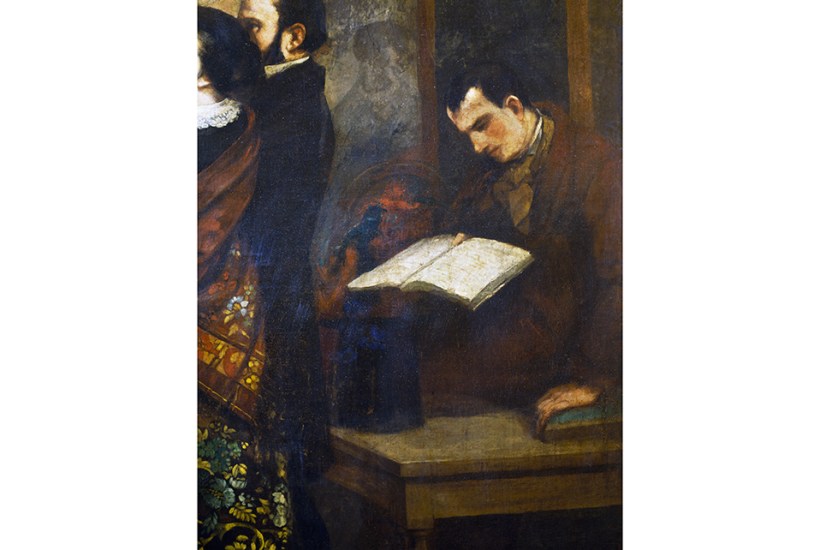The shared etymology of the words ‘text’, ‘textile’ and ‘texture’ – from the Latin verb textere, ‘to weave’ – has long been a fertile subject, its thread running through the work of theorists such as Roland Barthes, Julia Kristeva, Hélène Cixous, Gilles Deleuze (from whom one of the epigraphs for this book is taken) and others. But this now critical commonplace provides a helpful entry point to the Canadian poet Lisa Robertson’s sometimes evasive first novel The Baudelaire Fractal, a work obsessed with textiles, tailoring, intertextuality and the woven physicality of language. The word ‘novel’ seems only really appropriate in its adjectival sense.
It tells the story of Hazel Brown, a woman who wakes one morning, following her delivery of a lecture on ‘wandering, tailoring, idleness and doubt,’ in a hotel in Vancouver, to ‘the bodily recognition that I had become the author of the complete works of Baudelaire’. Or ‘perhaps it is more precise to say that all at once, unbidden, I received Baudelairean authorship, or that I found it within myself’. Now in middle age, she sets about her task: ‘to re-enter, by means of sentences, the course of my early apprenticeship… to make a story about the total implausibility of girlhood’.
The plot has a whiff of magical realism, via Borges, but really it evades genre or lineage, just as Jeanne Duval – Baudelaire’s muse, and one of the two women with whom the narrator is interested – ‘doesn’t offer herself to an interpretation’. And Duval does provide something of a cipher for the novel; it is less about Baudelaire than about his representation of his female subject, or about the absence at the heart of those representations, as in Gustave Courbet’s ‘The Artist’s Studio’, in which Duval was painted beside the poet, then painted over, before, ‘many years later, as if in a mystic material refusal of this obliteration,’ she became visible again.
The narrator, too, insists on her presence in the male world of 19th-century poetry, where even culture is ‘owned’. ‘I needed to write in order to make a site for my body,’ she explains: ‘I, a girl, exultant, crossed into the room of sentences.’ Her aim: ‘To free the sentence from literature.’ And following Cixous and Deleuze, writing and the body – and therefore the trappings of the body, fashions and fabric – are indissolubly linked, dialectic, porous: ‘I would be the girl of my notion of literature… My outfits and their compositions were experiments in syntax and diction.’
This synthesis of textures, of meditations on tailoring and art, and ‘the immense, silent legend of any girl’s life,’ is ambitious, clever and often beautiful and pressing. If often defiant of categorisation, as Jeanne Duval defied interpretation in her portrait, Robertson’s first foray into fiction is a timely reminder that ‘a sentence can be a blade’.
Got something to add? Join the discussion and comment below.
Get 10 issues for just $10
Subscribe to The Spectator Australia today for the next 10 magazine issues, plus full online access, for just $10.
You might disagree with half of it, but you’ll enjoy reading all of it. Try your first month for free, then just $2 a week for the remainder of your first year.








Comments
Don't miss out
Join the conversation with other Spectator Australia readers. Subscribe to leave a comment.
SUBSCRIBEAlready a subscriber? Log in